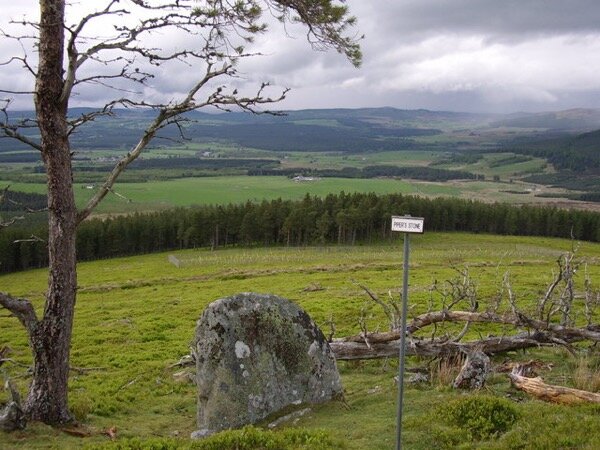
Cromdale Battlefield
• Inverness-shire •
The Battle of Cromdale was the final battle fought on the British mainland in support of the first Jacobite Rising.
It was fought between a small force of Jacobite Highlanders under the command of Major-General Thomas Buchan and a Government army of dragoons and infantry under Sir Thomas Livingstone.
The Government troops inflicted a crushing defeat upon the Jacobite forces, and they would subsequently disperse. Although James’ Irish campaign was to continue for another year, the Jacobites in Scotland were unable to mount another major campaign of resistance until 1715.
The Battle of Cromdale
The Battle of Cromdale took place at the Haughs of Cromdale on 30 April and 1 May 1690. The site is on a hillside near the village of Cromdale.
After their defeat at the Battle of Dunkeld in 1689, the Highland clans had returned to their homes in low spirits. Some of the clans proposed to submit to the government, but they eventually resolved to continue the war, but not until the labours of the spring season were complete in the Highlands. The general muster of the clans was postponed.
General Buchan, who was directed over from Ireland to become commander-in-chief of the Jacobite forces in Scotland, advanced his men through Badenoch, intending to march down Speyside into the Duke of Gordon's country, expecting to muster additional forces. Due to desertion, Buchan's force at this point had dwindled to just 800 men. He ignored counsel from his Scottish officers not to advance and marched down the Spey as far as Cromdale where he encamped on the last day of April.
He was met near Grantown-on-Spey at Cromdale by a larger government force under Sir Thomas Livingstons, commander of the garrison of Inverness. As Livingston approached with his men, on the opposite bank of the Spey, the Jacobite forces started to retreat. Livingston's cavalry crossed the river and intercepted the Jacobites who made a brief stand at the foot of the hill of Cromdale. However, a thick fog came down the side of the mountain and enveloped the outnumbered Jacobites, compelling Livingston to discontinue the pursuit. According to reports, the Highlanders had 400 men killed and taken prisoner. Livingston's losses were reported as between none and 100 killed.
A group of around 100 men, who had separated from the main Jacobite force, crossed the Spey the following day. After being pursued by some of Livingston's men, they were overtaken and dispersed on the moor of Granish near Aviemore, where some of them were killed. They attempted to seize the castle of Lochinclan, but their attack was repelled by the proprietor and his tenants.
The defeat at Cromdale effectively ended the rebellion in Scotland.
Getting There
Location
Haughs of Cromdale
Cromdale
Inverness-shire
What3Words reference
perfumes.wacky.dives

